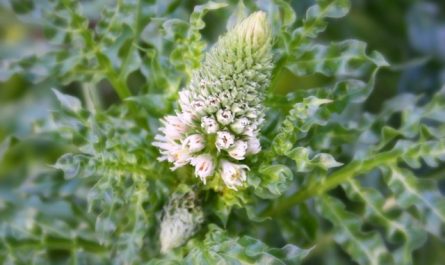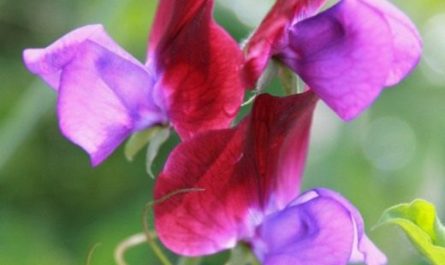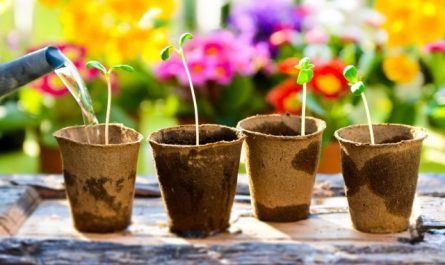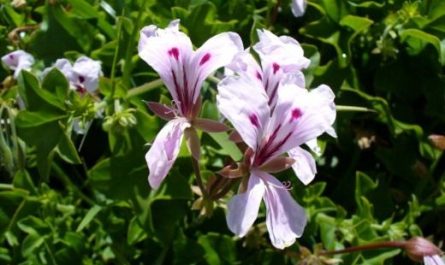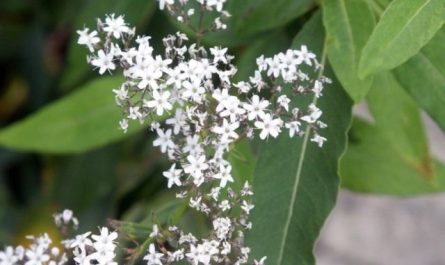The favorable time for planting herbaceous peonies is considered to be the period from late summer to mid-October. What to do if you did not have time to sort out your bushes in early autumn or became the happy owner of the long-awaited plant later, or maybe you are just waiting for its arrival? Is it possible to plant peonies later, even in November? – Yes, you can and should! This is better than waiting for spring and storing planting material in the cellar.

If stored for a long time, the rhizome dries out and becomes depleted. A peony has a better chance of surviving if planted in late autumn than to survive until spring indoors. In spring, peonies growing in the garden wake up early, still under the snow. The roots are still fragile and are easily damaged during transplantation. In the spring, only planting material with a closed root system is planted, otherwise the plants will take a long time to take root and get sick. This is also a reason not to postpone transplantation until spring.
While the ground is not frozen, the rhizome will have time to take root before the arrival of stable frosts, of course, if your area is not covered with snow. Autumn soil cold is useful for peonies, it serves as a signal for the growth of new roots.
It is important to understand that, with the exception of some cases, peony bushes are planted directly in a permanent place. They need time to grow up. We will wait from three to five years from the moment of planting the division for the bush to bloom lushly. If the planting material, the choice of location and planting are unsuccessful, you will have to repeat everything again and correct the mistakes, spending years on this.
Therefore, I will tell you how to plant herbaceous peonies in late autumn so as not to wait for years for them to bloom, and what to do if the planting material is received only in November.
In which division can you be sure?
Half of the success depends on the quality of the peony division. Externally, it is a part of the bush rhizome with three or more large buds and the remains of the stems. Ideally, it should be like this:
• It has thick root tubers, at least 2 cm in diameter. It is desirable that their total length be 10-15 cm.
• The division has 3, 4 or 5 powerful brightly colored buds
• There are 2-3 adventitious roots about 10 cm long. Such a division will better develop a powerful root system.
Large divisions with long powerful roots, having 6 or more buds, may initially please with flowering, but then the development of the peony will stop. Young roots and shoots will not grow, exhausted old roots will slow down the development of new ones and rot. Such peonies stop flowering and even die. Do not rely on the viability of bushes from massive divisions, they have no impetus for development.
Small rhizomes with one or two buds will require additional time to grow.

Where peonies will grow and bloom better
In a sunny and spacious place, protected from strong winds. Therefore, it is better to choose a planting site taking into account the preferences of the plants:
- Peonies love the morning sun, but not direct midday rays. In such areas, they quickly fade, and the color of the burnt flowers will not please. The eastern side is suitable, so that in the first half of the day the sun illuminates the plantings for about six hours. To prevent diseases and rot, the rhizomes must be well warmed. Peonies do not bloom in constant shade and even with regular feeding they will not receive enough nutrition, since the lack of light slows down the life processes of these plants. Without sufficient light, peonies will not be able to synthesize the necessary nutrients and will wither.
- Keep the plants about two meters away from the fence and buildings. Otherwise, the root system will be suppressed, and peonies need space and free air movement around the bushes.
- Strong wind spoils the decorativeness of bushes, shakes flowers, breaks tall stems. Peonies will be calmer in places protected from winds or with good support.
- Close proximity to trees and bushes oppresses them. For example, when I planted my peonies 3 meters from the birch, it was still small. Time passed, the tree grew tall and began to take the lion’s share of nutrients and moisture from the peonies. Now there is an urgent need for replanting.
- Stagnant water is destructive even for moisture-loving peonies. The root system must be protected from an abundance of precipitation, stagnant melt water, and the proximity of groundwater. Bushes should not be planted in damp areas, or the planting sites should be raised by 20-40 cm.
- Peonies are egoists. They do not like even close proximity to each other. Depending on the size of the bushes, a favorable distance between them is 60-100 cm.
We prepare the planting hole thoroughly
Once you have decided on the place where the peonies will live, prepare the planting holes. It is better to do this in advance, at least 2 weeks before planting, so that the soil has time to settle.
The planting hole should be spacious even for a small division, considering its further significant growth. After all, peonies grow in one place for 6 years or even much more. They require a significant supply of nutrition. A large hole will hold more nutrient soil, which should be prepared in advance and, if necessary, deoxidized. Peonies do not like acidic soil. The optimal soil is neutral or slightly alkaline – pH 6,5-7,5.

The planting hole should be spacious even for a small division, taking into account its further significant growth.
Approximate dimensions of the planting hole: width 60-100 cm, depth – 60-80 cm, on light soils – 50 cm. Much depends on the size of the division itself. In order for the rhizome of the planted plant to develop correctly, the dimensions of the planting hole must allow free accommodation of all the roots with a reserve of space, and also so that they are predominantly directed downwards.
Ideally, a drainage layer of 15-20 cm is needed at the bottom. Coarse sand, small pebbles, and broken bricks, which can always be found on a summer cottage plot, are suitable.
Council: before filling the hole with soil, you can install 1-2 plastic or metal pipes with a diameter of 5 cm at an angle to the center. They should rise slightly above ground level. In the future, it will be more convenient to feed the peonies through them, since the nutrient solution will reach deeper to the roots. After planting, it is much more difficult to install the pipes. For the winter, the holes are tightly closed.
Fill 2/3 of the hole with well-rotted organic matter – humus, compost. If you haven’t stocked up on them, buy a bag of good garden soil and mix it with your own. And no manure. This will be the bottom layer of nutrient soil, to which you need to add:
• 300 g ash, 200 g superphosphate, 5 g ferrous sulfate;
• or 200 g of ash, 200 g of bone meal, 1-2 glasses of autumn fertilizer granules.
Ferrous sulfate can be replaced with glyocladin. 4 tablets near the rhizome will give less reason to worry about possible rot.
In addition to organic matter, ash and other fertilizers, it is useful to add a glass of mixture to the planting hole to reduce soil acidity. It is easy to prepare from 20 g of boric acid powder and 2 kg of dolomite flour. Pour the ingredients into a basin and mix thoroughly. The mixture is stored in a closed container and used as needed at the end of the season. Like ash, it contains calcium, which is necessary for peonies.
The enriched soil is thoroughly mixed and compacted. The remaining upper third of the hole is filled with the previously selected soil mixed with humus or compost (1:1). This soil layer will protect the plant roots from contact with fertilizers.
We generously water the prepared hole and wait for the required time.
Council: if you ordered planting material and it is late, cover the planting hole with film to protect it from frost and throw plant remains on it.
I am sure that many do not have the opportunity to prepare for planting in advance. Then we plant peonies in fresh, but well-compacted holes, abundantly watered.

Planting a peony: not lower, not higher
First, inspect the division, but do not hold it by the stems during any operations. They are easily torn off together with the buds. Remove old roots and dried buds.
Cut out unhealthy, darkened parts of the root tubers down to the white tissue, dust the cut areas with ash, charcoal powder or thickly coat with brilliant green. All cuts must be protected from infection. If you have any suspicions, soak the division in a fungicide or anti-rot preparation. After sanitary treatment, the rhizome can be planted.
Place the division on a small mound in the center of the hole. Estimate the planting depth. The topmost bud should be 3-5 cm below ground level, on light sandy soils – below 5-7 cm. A wooden board laid horizontally on the hole flush with the ground will help regulate the level. When you are sure of the correct depth, fill the roots with a mixture of soil and humus.
If the planting hole was prepared on the day of planting, then we leave the upper bud at the soil level. Over time, the rhizome together with the loose soil will settle to the required depth. But such a plot should be slightly hilled to cover the buds with soil.
The correct planting depth of future bushes is very important. Overestimation, as well as deepening of buds, will have a negative effect on the development of plants. When planted high, renewal buds freeze, overheat in the summer, they lack moisture. Deeply planted peonies will need more time to grow roots and a lot of effort to drive shoots to the surface. Deepened root system warms up worse and can rot. In both cases, you will have to wait a very long time for flowering or it will be weak.
There is no need to compact the soil during work, there is a risk of damaging fragile roots and buds. It is better to water generously until the hole with the plant is filled in flush with the ground, and still has the shape of a hole. All the water will hit the target. You need to water until the soil stops absorbing water. Then the liquid will reach the roots as much as possible and help fill the voids between them.
Bushes with a closed root system are planted so that the buds remain at the same depth as those of the purchased specimen. The soil should be gradually added and compacted so that the earth does not settle and the plant does not go deeper than permitted.
It happens that store-bought peonies are planted in containers incorrectly, and buds are visible on the surface. Then the earth lump needs to be deepened into the soil by 4-5 cm.
Repeated watering depends on the weather. It will not be necessary if there is enough precipitation in your region in the fall and it is already cool. And in the southern regions, additional watering is possible.
By the way, root fragments can also be planted. They are without buds and are called “blind”. The fragments are placed horizontally in a furrow to a depth of 5 cm. There is a chance that the bud will grow back and a full-fledged plant will grow.

Insulation of young plantings
Before the first winter, we sprinkle the plantings with peat or humus to a depth of 15 cm, higher in northern regions, and additionally insulate with plant remains and stem cuttings. Under the cover, the soil will not freeze for a longer time and the plant will have time to take root.
Council: before mulching and insulating, you can install a foam box with holes over the division, and then fill it up. In the spring, when you rake away excess soil, the risk of damaging the buds will be minimal.
It would be a good idea to fence off the area with peonies with pegs or a fence: you will not accidentally trample the plantings, and you will prevent cats from making a toilet in the loose soil.
What to do: winter is coming, and the peony is only in hand
For example, you were unexpectedly given an interesting specimen of peony, or a package with a plant arrived in November, but it is not yet possible to plant it in a permanent place.
First option: temporarily bury the division until spring. Insulate, pour a bucket of light soil or dry compost on top. In spring, carefully rake this mound, then gradually free the sprouts from mulch. At the end of the season, transplant the peony to a prepared area.
The second option: sometimes I plant such unexpected divisions in buckets. In the fall, it is not always possible to decide on a permanent place and prepare it. After the experiment with tomatoes, I had plastic 10-liter buckets left. Large holes were already made in the bottom. I fill the buckets with good soil, plant the divisions there according to all the rules and dig them in level with the soil somewhere on the site, while it has not yet frozen. The containers can be prepared in advance, buried and insulated with film, soil, dry leaves before the plants arrive. In November, even with frosts, you can plant the divisions in these containers. Then mulch and insulate. The peony will survive the spring and summer in a buried bucket, and in the fall, transfer it to a prepared place in the garden.
Next year, the young peony will spend its energy only on rooting, growing short thin stems. You shouldn’t expect flowering yet. But even in a year, most herbaceous peonies do not reach full maturity. They will need approximately 3-4 years to develop, but the wait is worth it, because flowering will become more abundant over time.
In ancient times, it was believed that evil spirits avoid places where peonies grow for up to 20 years or more. I hope that the article will help you plant and grow flowers full of charm, they will become long-lived in your garden and will bloom in huge bunches.

